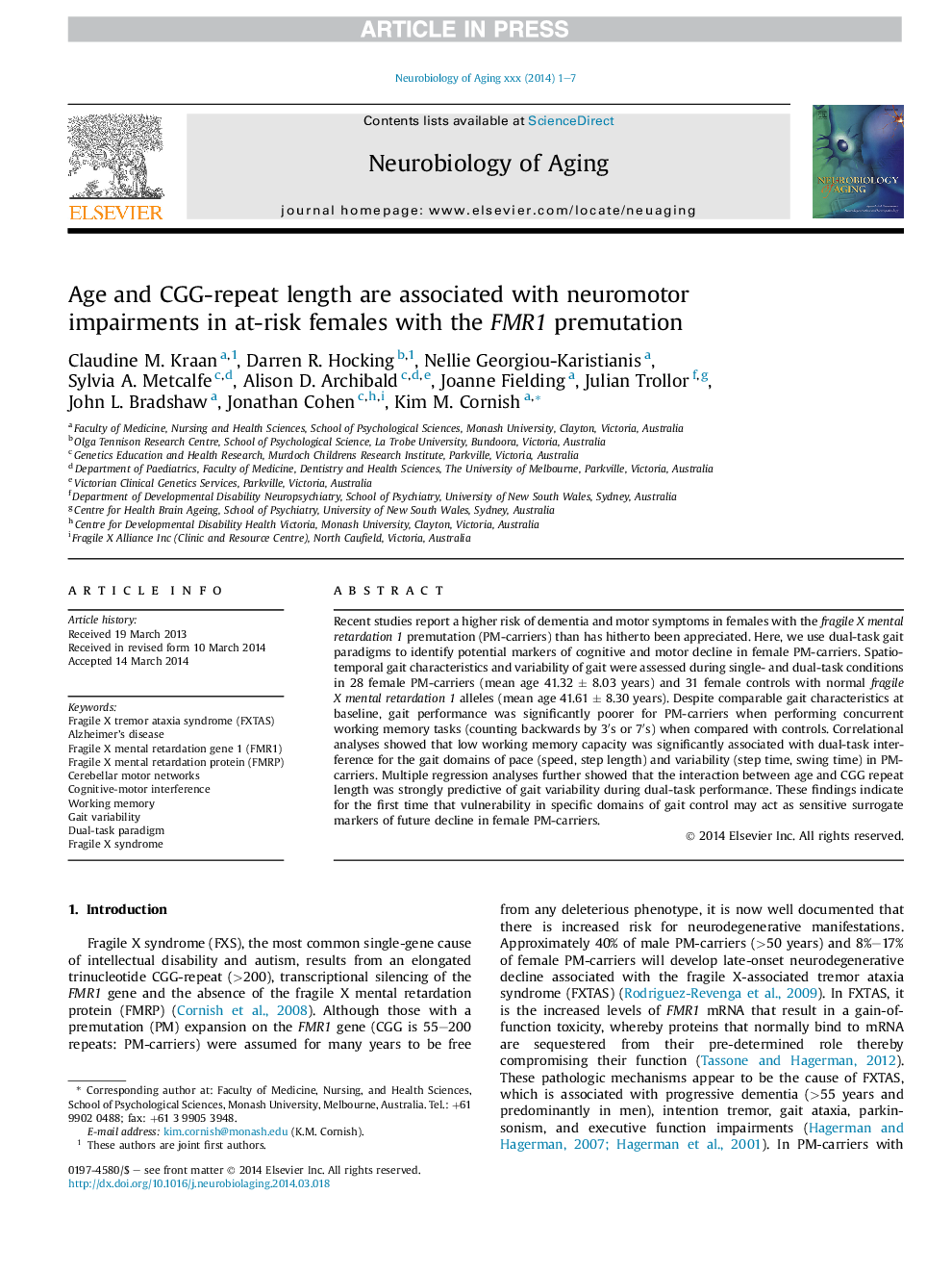| Article ID | Journal | Published Year | Pages | File Type |
|---|---|---|---|---|
| 6805747 | Neurobiology of Aging | 2014 | 7 Pages |
Abstract
Recent studies report a higher risk of dementia and motor symptoms in females with the fragile X mental retardation 1 premutation (PM-carriers) than has hitherto been appreciated. Here, we use dual-task gait paradigms to identify potential markers of cognitive and motor decline in female PM-carriers. Spatiotemporal gait characteristics and variability of gait were assessed during single- and dual-task conditions in 28 female PM-carriers (mean age 41.32 ± 8.03 years) and 31 female controls with normal fragile X mental retardation 1 alleles (mean age 41.61 ± 8.30 years). Despite comparable gait characteristics at baseline, gait performance was significantly poorer for PM-carriers when performing concurrent working memory tasks (counting backwards by 3â²s or 7â²s) when compared with controls. Correlational analyses showed that low working memory capacity was significantly associated with dual-task interference for the gait domains of pace (speed, step length) and variability (step time, swing time) in PM-carriers. Multiple regression analyses further showed that the interaction between age and CGG repeat length was strongly predictive of gait variability during dual-task performance. These findings indicate for the first time that vulnerability in specific domains of gait control may act as sensitive surrogate markers of future decline in female PM-carriers.
Keywords
Related Topics
Life Sciences
Biochemistry, Genetics and Molecular Biology
Ageing
Authors
Claudine M. Kraan, Darren R. Hocking, Nellie Georgiou-Karistianis, Sylvia A. Metcalfe, Alison D. Archibald, Joanne Fielding, Julian Trollor, John L. Bradshaw, Jonathan Cohen, Kim M. Cornish,
